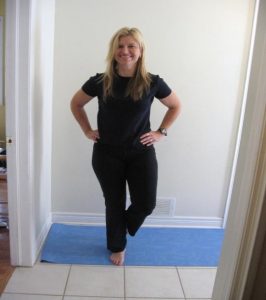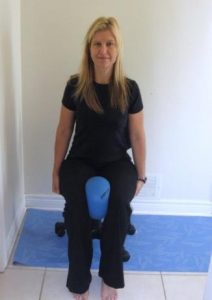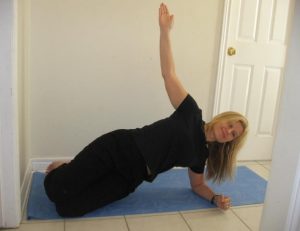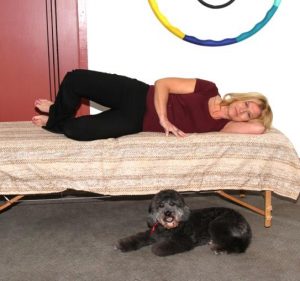During the past few months so many activities have been cancelled which has led to many of us spending too much time sitting at home. This extra sitting time could literally be “a pain in the butt”. I’m here today to talk about the importance of strong glutes. The muscles along the backside of your pelvis are commonly referred to as your glutes. The glutes consist of your Gluteus Maximus, Gluteus Medius, and your Gluteus Minimus. These muscles attach from the top of your pelvis to the back of your thigh bone.
Gluteus Maximus is very important for balancing the pelvis and maintaining upright posture. Having strong, functional gluteal and hip muscles can help you avoid and recover from injury in your low back, hips, knees, and ankles by creating proper alignment and stability. The Gluteus Medius is a deeper muscle whose role is to move your leg out to the side (abduction) and to turn your leg out (external rotation). Its injury prevention power lies in its ability to keep your pelvis level and stop your leg from turning in when you walk. For older adults with weak glutes, it is common to see ‘dynamic valgus’ at the knee. This is when the knee caves in towards your other leg when you walk or while lowering yourself into a chair. This is a common dysfunctional pattern that can lead to knee osteoarthritis or patellofemoral syndrome.
Our glutes are responsible for assisting us with walking, lifting, carrying, climbing stairs, and standing. Unfortunately, many of us spend too much time sitting on one of our greatest assets. Sitting for many hours can lead to weak or “sleepy” glutes. In a seated position, the glutes are stretched. Stretched muscles are long and weak. If the glutes are weak or inactive, they cannot hold your pelvis in the right position or help maintain correct alignment of your femur. This can cause the wrong muscle groups to be used to help compensate for the lack of strength. Substituting muscles can cause a change in our walking pattern which can lead to increased stress and damage on our joints. For example, when hip extension is not available, we tend to substitute with lumbar hyperextension. This basically means our low back is shifting back and forth every time we take a step. If you think of your spine like a coat hanger you will understand the negative effect that could have over time. Cumulative breakdown occurs in the spine under this type of stress and as a result low back pain tends to emerge.
In our body we have two types of muscle. The tonic system consists of your flexor muscles which are older and more dominant. The phasic system consists of extensor muscles and emerges shortly after birth. Different muscles work in different ways. Tonic muscles are postural muscles and are active all of the time.
They anticipate movement and keep us upright. If they weren’t constantly awake, we would fall over when standing for long periods of time. The glutes work very differently. They are phasic muscles and are used for short burst activities such as jumping or running. These huge muscles have a lot of power, but don’t have a lot of endurance. Most of the time phasic muscles are resting. Think of primal times when we needed to outrun a dangerous predator. Our body needed the phasic muscles to be ready for quick burst activities to survive. Unfortunately, as we age and because many of us are dealing with injuries, we may go days, weeks or sometimes years without jumping or running. We have a use it or lose it type of brain. If we stop using a muscle it becomes harder and harder to connect with that muscle. The inability to contract or activate your glutes has been called “gluteal amnesia” by Dr. Stuart McGill, who is a professor of Spine Biomechanics and one of the most respected and well-versed back specialists known today. I attended training with Dr. McGill and he stated that one of the most common denominators in his clients with chronic back pain is a lack of gluteal activation and strength.
Bottoms Up! Today we are going to learn how to re-connect our bottoms with our brains with a few simple exercises.
Trendelenberg Test
This is a test for glute weakness. Begin by standing with your hands on your hip bones. Next lift one foot off the ground. Your hands are there for feedback. If the pelvis cannot stay still or level when your foot is lifted that indicates gluteal weakness. If you have a difficult time performing this without hip movement this will be your first exercise.

Pillow or Ball Squeeze
Start by placing a ball or pillow between your knees. One of Stuart McGill’s cues is to “Imagine you have a valuable coin between your buttocks and you don’t want it to fall out” This may not be a pretty picture but it’s effective. Squeeze the invisible coin as you count out loud to five and release. Repeat 3 sets of 10.

Side Plank
Start with your elbow directly below your shoulder. Make sure your spine is straight and in a neutral position with the knees bent. Use the muscles of your side to lift your body off the floor. Next squeeze your glutes as you push your hips forward so they are in line with your knees and shoulders. Count out loud for five to ten seconds. Repeat 3 times each side.

Clams
Start by lying on your side with your knees bent. Imagine your head, bottom and feet are all against a wall behind you. Next engage your glutes while you open and close your knees pressing your heels together. Open as far as possible without allowing your torso to roll. Repeat 10-15x each side

Remember the “Buns of Steel” DVD’s? In the past we’ve probably exercised for aesthetically pleasing results. That’s just an extra bonus. A few simple exercises can help improve your balance and lower the probability of back pain. No if, ands or butts about it.






